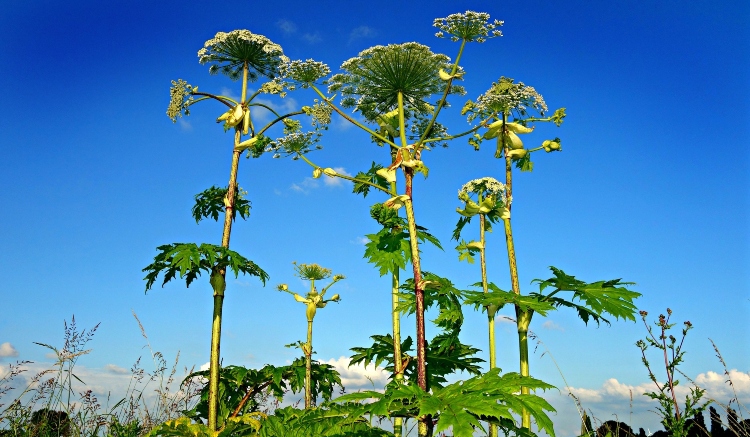
Giant Hogweed - or to call it by its official name, Heraleum mantegazzianum - is an invasive species that can be found across various regions of the United Kingdom.
Compared to some other invasive species such as Japanese knotweed, giant hogweed doesn’t really get much time in the spotlight. However, that doesn’t mean that giant hogweed isn’t worth learning about, especially if you think there may be an infestation in your area.
If left untreated, giant hogweed can be directly physically harmful to those in contact with it. Here at Total Weed Control we’ve put together this handy fact sheet about giant hogweed to give you the essential facts you need to identify and deal with giant hogweed safely.
Giant Hogweed Facts
1) Giant hogweed origins
Giant hogweed is an invasive species, meaning that it isn’t native to the UK. It’s believed to originate from central Asia and western Eurasia. In the 19th Century it was introduced to the UK as an ornamental plant, similar to Japanese knotweed. Giant hogweed has also been spread to other regions it isn’t native to, including the United States and Canada.
Another similarity between Japanese knotweed and giant hogweed is that both species are covered by the Wildlife and Countryside Act of 1981. Under this act, it is an offence to plant the species or allow it to spread into the wild.
However, whereas Japanese knotweed is physically harmless and is simply a logistical nightmare, giant hogweed is a bit more dangerous.
2) Giant hogweed family tree
Giant hogweed actually comes from the same family as the carrot, Apiaceae. Some other well-known relatives of giant hogweed include cow parsley, parsnip, cumin, celery, and coriander.
While there are plenty of harmless (and yummy) members of the giant hogweed family tree, there are also some more sinister bedfellows. The Apiaceae family is home to some pretty dangerous species, such as poison hemlock, spotted cowbane, and fool's parsley.
3) Identifying giant hogweed
One of the easiest ways to identify giant hogweed is by its massive size. Giant hogweed typically grows to heights of around 3 metres tall, but in some cases, has been known to grow as tall as 5 metres. It has thick, bristly green stems that are often splotched with purple colouring.
Giant hogweed grows clusters of white flowers in the summer months. These white floral rosettes have resulted in giant hogweed being noted to look very similar to species such as cow parsley and elderflower. These flower heads can often grow as large as 2 feet across.
Don’t let these pretty floral arrangements fool you – giant hogweed isn’t safe to touch, and should always be handled with caution.
4) Giant hogweed favourite hideouts
If you’re looking for giant hogweed, you’re best going somewhere moist and shady, as these are the kinds of conditions giant hogweed favours. In the UK you can commonly find giant hogweed growing on river banks, where the running water allows for the easy dispersal and spread of seeds.
5) Look, but don’t touch!
Giant hogweed may be related to many harmless (and delicious) plants such as parsnips and parsley, but giant hogweed is one plant you wouldn’t want to sink your teeth into.
The sap from the giant hogweed plant contains chemicals that can cause photodermatitis or photosensitivity. If there is contact between bare skin and giant hogweed sap the skin becomes very sensitive to sunlight and may suffer severe blistering and long-lasting scars. If giant hogweed sap comes into contact with eyes, it can even lead to blindness.
* * *
If you think you may have a giant hogweed infestation somewhere on your property, for your personal safety, we’d strongly advise against trying to remove it yourself. Since giant hogweed sap can cause severe blistering upon skin contact, it’s best to utilise professional weed removal services.
Total Weed Control specialise in the control and removal of invasive species such as giant hogweed. If you’d like to talk with a member of our team about any giant hogweed related questions you may have – or any weed removal for that matter – reach out and contact us today. Our professional team members will be more than happy to answer any questions you may have, and even help you arrange your FREE lawn survey.
Contact Us
Read More: Giant Hogweed Removal
